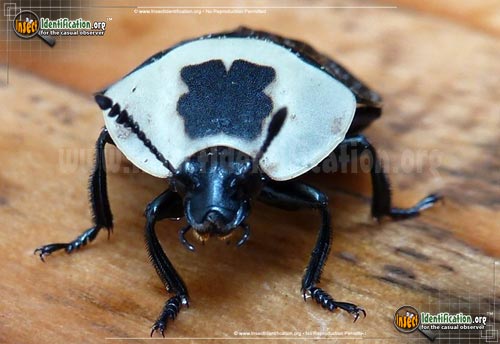

Species in genus Nicrophorus, commonly referred to as burying beetles or sexton beetles, are well known for their habits of burying small vertebrate carcasses. When there is a carcass on the side of the road or rotting flesh in the woods, you can count on many species of carrion beetles to be on. The Silphid beetles (family: Silphidae) are a very interesting group of insects, many of them associated with carrion which mean they also important decomposers/recyclers. When emailing please include your location and the general estimated size of the specimen in question if possible. These beetles are part of nature’s team of decomposers. By submitting images to us () you acknowledge that you have read and understood our Site Disclaimer as it pertains to "User-Submitted Content". Material presented throughout this website is for entertainment value and should not to be construed as usable for scientific research or medical advice (regarding bites, etc.).Please consult licensed, degreed professionals for such information. This resource uses publically-released information. They feed and breed on carrion and some species will breed communally on carrion too large to bury.
#Carrion beetles skin#
Dried skin and muscle tissue is eaten as well. Harris, This is a Sexton Beetle or Burying Beetle in the genus Nicrophorus, possibly Nicrophorus interruptus which is pictured on UK Beetles where it states: Nicrophorus species are unusual among beetles as they display biparental care of the larvae. In addition to to dead flesh and stinky fruit, they also eat maggots and other insect larvae feeding on decaying animals. The larvae look much like sowbugs or pillbugs, but carrion beetle larvae are capable of moving much faster. The larvae appear slightly flattened and are shiny black with distinct segmentation. First, the beetles must find the deceased, which they can do from up to. Carrion beetles are oval-shaped, horizontally flattened, and dull black with longitudinal raised ridges on the wing covers.


The Nicrophorinae are the more interesting of the two (in my opinion) because they actively bury the carcasses they find. The major differences between these subfamilies are behavior and morphology. Sometimes adults may be seen eating fungi or rotten fruit. Carrion beetles come in to general varieties: Silphinae and Nicrophorinae. The logo, its written content, and watermarked photographs/imagery are unique to this website (unless where indicated) and is protected by all applicable domestic and international intellectual property laws. The American Carrion Beetle earns its name by eating decaying flesh in both its larval and adult form. Beetle Identification Butterfly Identification Caterpillar Identification Spider ID Fungal Infections on Insects Nursery Web Spider Termite Basics Insect Molting Process The meaning of CARRION BEETLE is any of numerous beetles of the genera Necrophorus and Silpha (family Silphidae) that feed chiefly on dead animals though a few (as S.


 0 kommentar(er)
0 kommentar(er)
